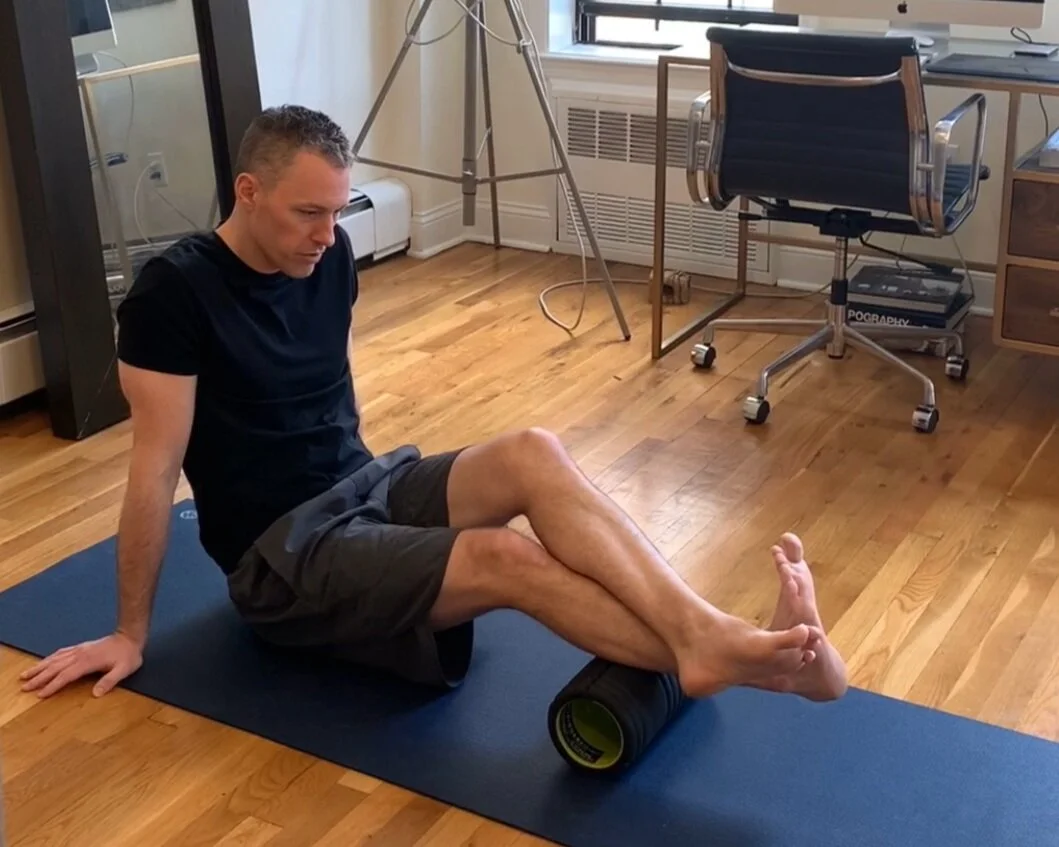If you feel a stabbing pain in your feet when you take your first few steps in the morning, that’s a red flag symptom of plantar fasciitis. Also known as morning foot pain, first step pain or simply “holy ...!”, plantar fasciitis pain is the most common foot problem in the United States, affecting roughly 2 million people each year. It involves inflammation of a thick band of tissue that runs along the bottom of the foot (the plantar fascia) from the heel to the toes and can lead to loss of ankle mobility, decreased foot strength, and a lot of frustration.
The onset of plantar fasciitis is usually attributed to an increase in frequency, intensity, and duration of activities like running or jumping. (When social distancing ends and racing resumes, we’ll all have to be wary of what can happen when we up our volume too quickly.)
Plantar fasciitis often sidelines athletes for long periods. We’ve had patients come to us desperate for a solution, having been unable to run pain-free for years. The average case lasts over 14 months. But here’s the thing most people (practitioners included) don’t understand.
Plantar fasciitis is not the problem. It’s just a symptom.
Orthotics and injections are often sought out as treatment options for plantar fasciitis symptoms, but they are merely short term fixes. They provide a crutch that the body relies on and gets used to, but the problem doesn’t go away. To resolve plantar fasciitis once and for all, it’s imperative to work with a physical therapist to find the underlying cause as to WHY you’re getting the pain.
Usually, the culprit for plantar fasciitis pain is calf tightness. If the calf muscle can’t let go enough to allow the plantar fascia to do its job, you wind up with those muscles and tendons pulling on the heel bone in opposite directions. Ouch. If you’re experiencing pain in the foot and/or heel, the calves are where you want to start. Dr. Josh Grahlman and Ray Delacruz outline some self-care tips and very specific rolling and stretching techniques that help ease that nasty heel pain in most cases.
FIRST LINE OF SELF-CARE TREATMENT FOR PLANTAR FASCIITIS:
The first thing to try is a shock-absorbent heel cup.
Also try night splints.
Avoid walking barefoot, especially first thing in the morning. Unless you’re a masochist. (If you’re a triathlete, that’s probably debatable.)
Check your shoes for excessive wear and tear. All of your shoes. (We see you and your closet.) If they’re worn out, choose a pair that’s more supportive.
Back off activity and intensity, and ice the area. We know backing off is your least favorite directive, but it’s necessary.
IN ORDER FOR THESE PLANTAR FASCIITIS SELF-TREATMENT TECHNIQUES TO BE MOST EFFECTIVE, PERFORM THEM IN THIS ORDER:
Roll out the calf. (Watch our demo.)
Find the knots and tender spots, and rest on them. Overlap with the opposite leg and add an ankle pump to floss the muscle. Relax. Breathe. It’ll suck, but it’ll also help. Be careful not to roll over the achilles tendon and roll both sides of the calf muscle.Stretch the foot fascia. (Watch our demo.)
Use a half roller or grab a rolled up yoga mat or beach towel. Put the base of the ball of your foot on it, so your toes are pointing up and your heel is on the floor. Drive the knee as far forward as you can without your heel coming off the ground. Hit different areas of the calf and foot by varying the angle of the knee drive. Do 3 knee drives in each plane (9 total), twice a day.Stretch both calf muscles. (Watch our demo.)
Start with a runner’s stretch against the wall with the knee straight, perpendicular to the wall. Lean in for 30 seconds. Then bring the back foot forward, keep the hips back and drive the knee forward so it moves the stretch down to the other muscle. Hold for 30 seconds.
STRENGTHENING EXERCISES TO TREAT THE CAUSE OF PLANTAR FASCIITIS ON YOUR OWN:
Heel raises:
Stand on a step. Lift heels to the top end of your range of motion. Slowly lower down to the end of your range of motion. Hold for 10 seconds. Repeat 10 times. You should feel a stretch in the back of the lower leg, ankle and foot.
If these treatment techniques and stretches are not relieving your plantar fasciitis pain, it’s time to see a sports and orthopedic physical therapist for an evaluation to determine what’s going on. If you choose to see a physician or podiatrist instead, and they recommend cortisone, steroids, orthotics or surgery, PLEASE reconsider giving physical therapy a shot first. Our Athlete Mechanics can work with you in person or via virtual PT to find the root cause of your issue and teach you additional techniques to solve your plantar fasciitis pain. Invasive procedures should be an absolute last resort, not a first line of defense. Reach out to us anytime at FixMe@ClutchPT.com
Be well.

